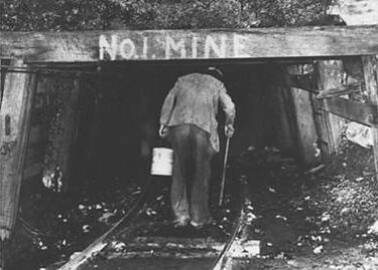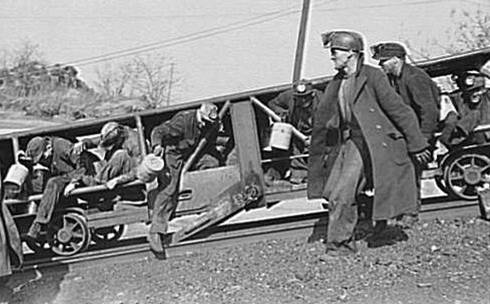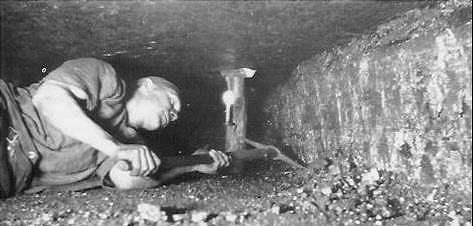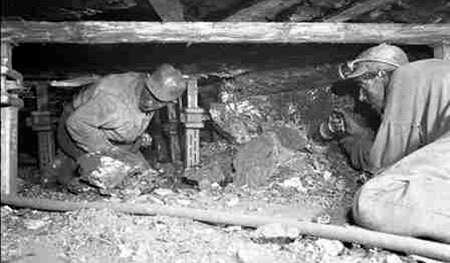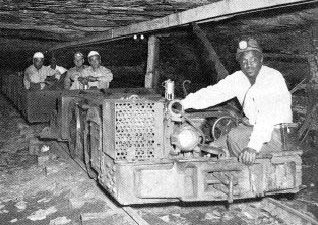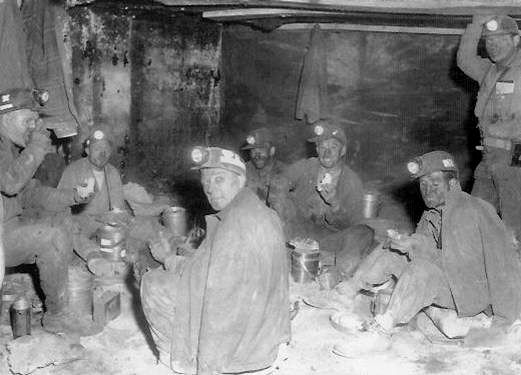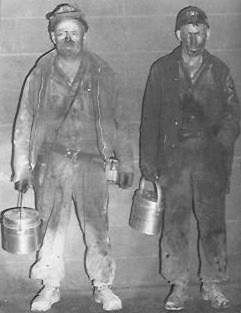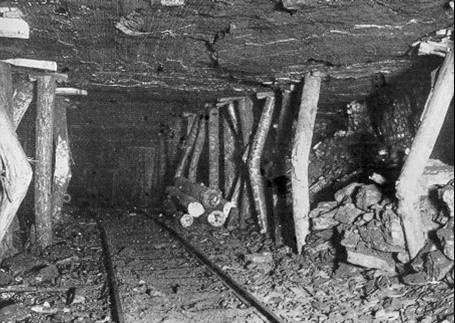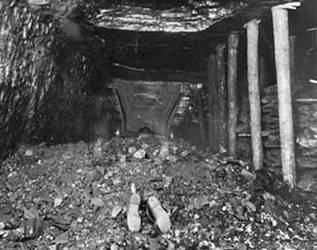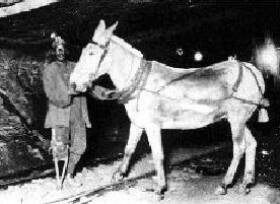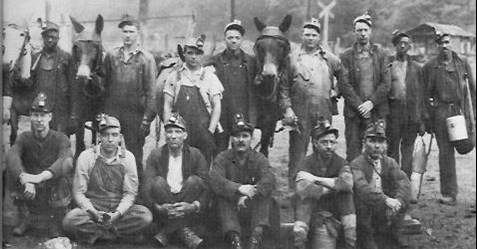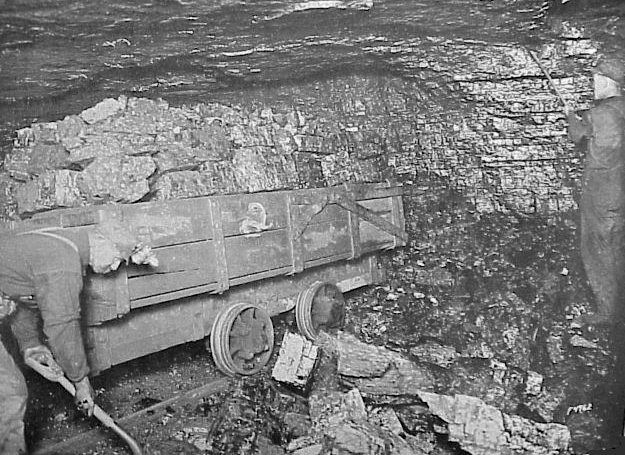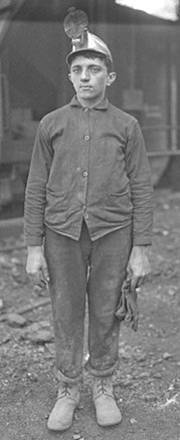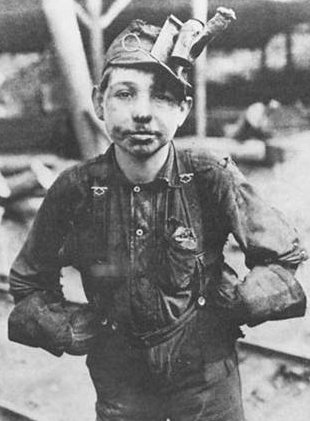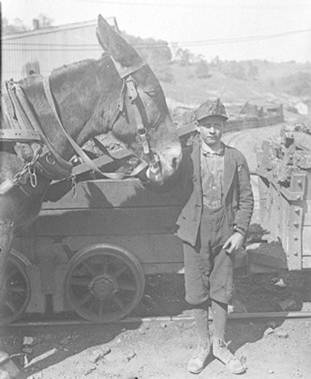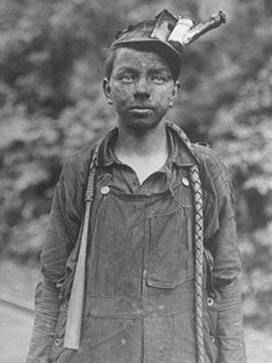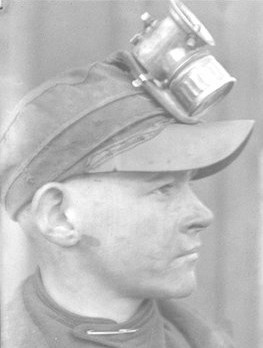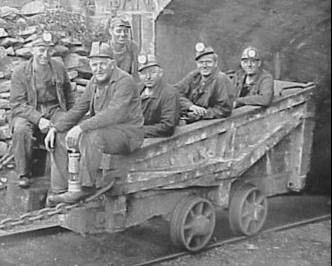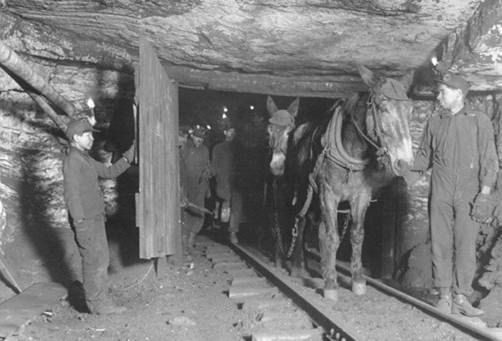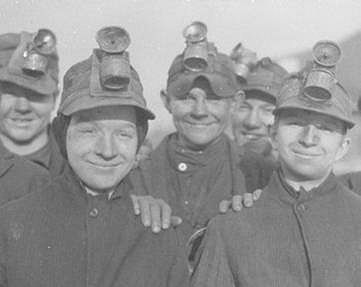
WORKING CONDITIONS
Some of the least desirable mines to work in were those that mined low vein coal. These low roof mines offered difficult and cramped working conditions at best. In some mines miners worked in coal seams less than two feet thick, like the photo in the upper right. Even in the haulageways the miners could not stand upright as in the lower right photo.
There were several means for miners to get to their work places in coal mines. Miners in a drift mine could walk in as seen above or ride in as seen below. If they were in a vertical shaft mine they could ride the cage up and down. In slope mines the miners could ride in coal cars as seen at lower right or ride in specially made mancars as seen at the bottom photo below.
Looking at these photos it is not difficult to see that coal mining was, and still is, a very dirty occupation. While you can easily see the coal dust on the faces, hands and clothes of these miners, what you cannot see is the coal dust in their lungs, which many times leads to the debilitating condition known as black lung. Even today, with all of the State and Federal safety regulations, black lung continues to be a problem for coal miners.
Roof failures were one of the leading causes of injury and death in coal mines. The above left photo shows a miner crushed by a roof fall. The photo above right shows roof props buckling under the pressure of overhead rock in a mined out area.
Coal mines have long been among the most dangerous mines. There has been the ever present danger of roof falls, premature detonation of blasting charges, haulage accidents, methane gas and coal dust explosions, underground fire, and a myriad of other lethal possibilities. Modern mining practices have greatly reduced, but not eliminated, these dangers.
For a long time there was no Workers Compensation or disability payments for miners injured on the job. Any miner who was injured and could not work received nothing from the coal company. The miner on the extreme right of the upper left photo is missing his left leg above the knee and is working on crutches. Both miners in the photo above have lost their left leg at the knee and are still working. The driver on the left continues to work after loosing his right leg at the knee. These are the lucky ones, they lived while many did not.
The physical effort of coal mining is evident in this photo of miners loading a 5-ton coal car, the entire car was loaded by hand. This back-breaking job was repeated numerous times during each shift day after day, six days a week.
It wasn't just men who worked in the coal mines, some boys started working in the mines at 8-10 years of age to help support their families. The youngest worked as door boys as seen in the upper left photo. Their job was open and close the doors that directed air flow through the mine whenever miners or coal cars needed to pass
Older boys, generally those 10-15 years of age were employed handling the mules and horses used to pull coal cars. They were known as driver boys and worked at this job until they were physically able to handle work of a miner.

